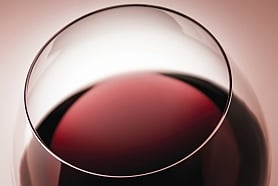Marsala – the oldest of Italy’s wines under the denominazione di origine controllata standard, denominated in 1969 – was regarded (and shamefully still is) as a kitchen condiment and not the noble beverage that it can be. If you are of a certain age, you will probably have an opened bottle of it tucked away in a corner of the pantry. The cook in the house probably uses it to prepare those vogue-ish and vaguely unhealthy dishes, Veal Marsala and Zabaglione (egg yolks whipped to a froth with sugar and Marsala).
The wine is named after the town of Marsala, which is on the west coast of Sicily and also gave its name to the region where the grapes for this fortified wine are grown. Depending on the grape mix, the wine can be golden or amber-hued or ruby-coloured. You may never have heard of these grapes, since they are found virtually only in Sicily. For the “white” Marsala they use Grillo, Catarratto, Ansonica, Inzolia and Damaschino; for the red, Perticone, Pignatello, Nero d’Avola and Nerello Mascalese.
We owe the “discovery” of Marsala to an English trader named John Woodhouse. In 1773, on an expedition to buy soda at a southern Sicilian port, he was forced by a storm to lay up in the port of Marsala. Dining at a local inn, he was served a wine that he thoroughly enjoyed – a wine that had been aged in a solera system to produce what the Italians call vino perpetuo — perpetual wine. The high-alcohol wine was kept in barrels, and when a portion of the contents was drawn off in the fall the barrel was topped up with fresh wine. Hence the idea of perpetual.
Woodhouse thought he had discovered a beverage as good as Madeira, which was at the time the drink of choice for the English aristocracy. So he forgot about the shipment of soda and loaded his vessel instead with 5,000 imperial gallons of wine in 100 gallon barrels called “pipes.”
Woodhouse was no purist, though, and in the tradition of port production, he decided to add brandy to the pipes to ensure that the rolling sea voyage to England would not spoil the wine. That proved to be the right call. So successful was Woodhouse’s purchase that he returned to Marsala and opened his own winery. And such was his acclaim that he was contracted by Admiral Horatio Nelson to supply his wine to the British Navy.
The success of Woodhouse’s Marsala drew another English merchant, Benjamin Ingham, to the region. Ingham built his own winery down the road from Woodhouse’s. In 1832, a Calabrese entrepreneur resident in Palermo named Vincenzo Florio bought tracts of land between the two English competitors and began to produce his own brand of Marsala — and an industry was born.
As it turns out, Florio was not only a talented businessman and vintner, but also an astute politician. He managed to befriend a couple of powerful sponsors: King Victor Emanuel II and General Giuseppe Garibaldi. In fact, at the Florio plant (it can only be called a plant because it’s enormous) you can see the musket that General Garibaldi gave to Florio.
In the late 19th century, Vincenzo Florio’s business acumen led to his consolidation of the industry. He bought out his competitors, including Woodhouse, and became the dominant force in the Marsala industry in those years; and the company he founded remains so to this day.
The exportation of Marsala reached its peak in 1870, accounting for an annual production of 50,000 imperial gallons. But changing tastes in England and the scourge of phylloxera, the vine louse that ate its way through the vineyards of Europe – coupled with some dubious imitations on the market – caused a drop in sales and consequently compromised the wine’s reputation.
In the town of Marsala, you can still visit the cellars built by Vincenzo Florio. These rooms are vast. Today Florio’s winery has six million litres of wine ageing there in huge oak vats. The oldest barrel dates back to 1939, which for an enterprise with that kind of history doesn’t seem so long ago — until you understand that the plant was bombed in 1943 by the Americans, and much wine was lost.
Marsala comes in three basic styles: sweet, semi-dry and dry. The wines are classified according to their colour, their sweetness level and their time in barrel. They can range in alcohol from 15 per cent by volume to 20 per cent.
The wine’s many sub-categories are as follows: Oro is golden in colour; Ambra as the name suggests, is amber, made from white grapes and coloured by a sweetener called mosto cotto, which is just cooked grape juice; Rubino is ruby coloured, made from red grapes; Fine is aged for less than a year; Superiore is aged for at least two years; Superiore Riserva is aged for at least four years; Vergine e/o Soleras is aged for at least five years; and Vergine e/o Soleras Stravecchio e Vergine e/o Soleras Riserva, the top quality, can be aged for 10 years or more.
At formal dinner parties in England, Marsala was traditionally served as a palate cleanser between the first and second courses of the meal. Nowadays the wine is more likely to be served chilled to accompany Parmesan, Gorgonzola, Roquefort and other strong cheeses. The sweeter versions, meanwhile, match well with fruits or pastries.
So take a look in the pantry and dig out that old bottle of Marsala. It may surprise you.
Tony Aspler is the author of 17 books on wine, including his latest, Canadian Wineries.





